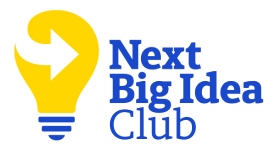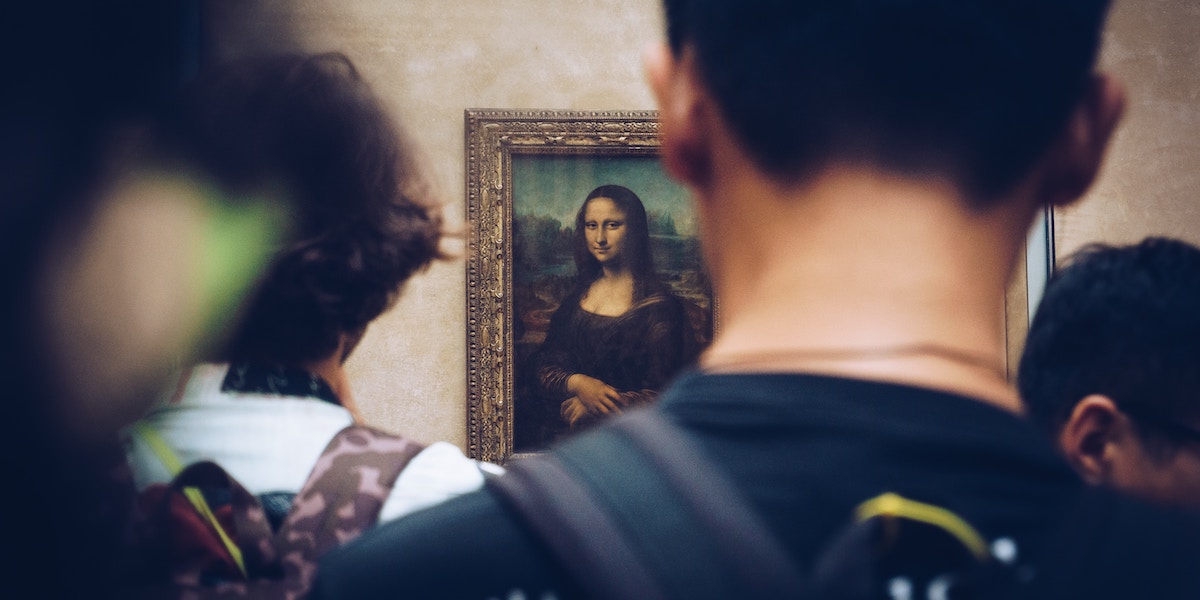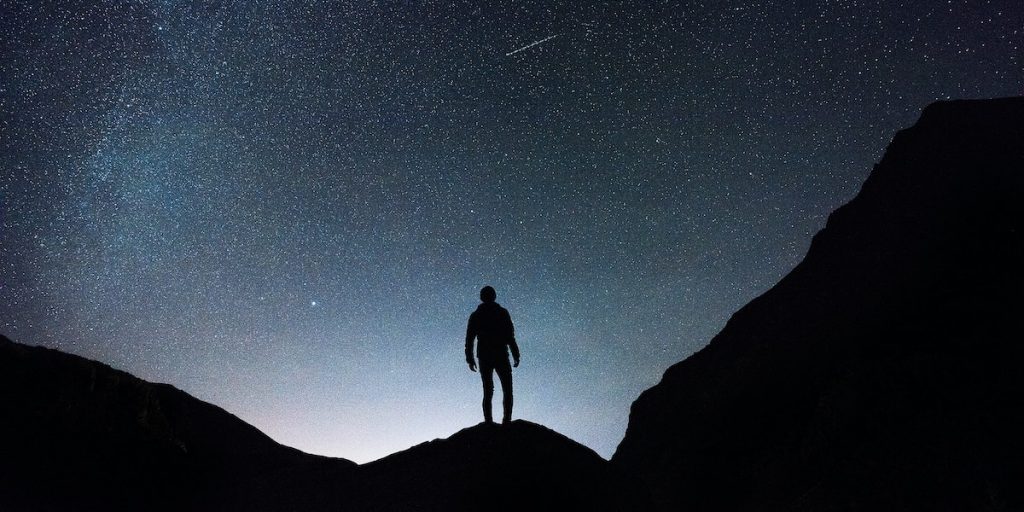READ ON TO DISCOVER:
- Which famous genius was a massive procrastinator
- Why Steve Jobs was so cruel to his friends and coworkers
- Why Einstein turned to music when he struggled with math
Walter Isaacson is the president and CEO of the Aspen Institute, and has been the chairman and CEO of CNN and the editor of TIME magazine. He is the #1 bestselling author of biographies of Benjamin Franklin, Albert Einstein, Steve Jobs, and most recently, Leonardo da Vinci. Adam Grant is an organizational psychologist, the top-rated professor at Wharton, and the #1 bestselling author of Originals: How Non-Conformists Move the World. The two recently sat down to discuss what made da Vinci and Steve Jobs so brilliant, and what we can do to follow in their footsteps.
This conversation has been edited and condensed. To view the full version, click the video below.
Adam: You’ve been the biographer of some of the greatest innovators in human history. Your new book is on da Vinci; why da Vinci?
Walter: I started with Ben Franklin, and then Einstein, and then Steve Jobs—[they were all] innovative and creative. And I said, “Well, what pattern [leads to] that?” The pattern wasn’t that they were smart, because you’ve met lots of smart people, and they don’t usually amount to much. The pattern tends to be curiosity across disciplines.
Ben Franklin went up and down the coast looking at how swirls of air resembled the swirls of the northeastern storms, and then he discovered the Gulf Stream. Same with Leonardo—he sees patterns across nature. Steve Jobs would always end his product presentations with the intersection of the arts and technology. He said at that intersection is where creativity happens. And he said that Leonardo is the ultimate of that! That ability not just to connect art and science, but in Leonardo’s case, to make no distinction between the beauty of art and science. That’s why he was the final mountain to climb in this series of books.
Adam: I think there’s a ton we can learn from da Vinci. I also think, though, that it seems unfair. I want to live in da Vinci’s era, because no one knew anything! So you could be an architect and a scientist and a great painter, and get to excellence much quicker in each of those fields than you can today. Is it too late for a Renaissance man or woman today?
Walter: Well, Leonardo was a misfit. He and Steve Jobs spent years as the misfits and rebels and round pegs in the square holes. He was illegitimate, which was lucky for him. Born out of wedlock, he didn’t have to be a notary like his father and grandfather and great-grandfather. He was gay. He was left-handed. He was vegetarian. He was a radical, and he was beloved in the town of Florence. They accepted that. And they assumed, like Leonardo, that you could learn everything you wanted about anything you wanted.

We can still be a little bit more like that, to answer your question. We silo ourselves too much, we specialize too much. The biggest takeaway from this book is to stay curious about everything, things you and I asked about when we were ten, but not in our later years.
Why is the sky blue? Why do fish swim faster in water than birds fly in the air? Leonardo woke up one morning and said, “I’ve got to know what the tongue of a woodpecker looks like.” It’s not because he needs it to study the flight of birds. He doesn’t need it to paint a painting—he needs it because he’s a learner. He just wants to know everything you could possibly know, about everything that could be known.
I mean he decided, “Alright, I want to do flying machines,” then he does studies on the flights of birds. Then he’s like, “I’m gonna do military machines,” then, “I’m going to do the design of churches.” But then he starts with anatomical drawing because he wants to paint St. Jerome, and he can’t quite get the neck muscles right. But after a while, he’s not just dissecting neck muscles—he’s dissecting the heart, the liver. He just drills down [deeper into each field of study].
Trending: How to Transform Daily Habits into Life-Changing Rituals
Bill Gates once said that [da Vinci] was the last person in history who could aspire to know everything there was to know about everything that was knowable. I’m not sure that’s totally true. Ben Franklin aspired to do that, and you know what, you and I can aspire to do that, with Wikipedia and the internet. Just staying curious is the main lesson.
Adam: It’s weird because [Leonardo] was accomplishing all of these things, and yet he was frustrated. What was it like to be da Vinci?
Walter: Well, we can see first of all that he’s human. He makes math mistakes, he leaves things unfinished, he comes up with crossbows that can never fire, tanks that could never roll.
And he despairs. Over and over in the notebooks, he writes this line: “Tell me, tell me, did I ever accomplish anything? Tell me, tell me, did I ever get anything done?”
Adam: I was shocked when I first read he was a serious procrastinator.
“An integral equation is just as beautiful as a brush stroke on the Mona Lisa.”
Walter: When Leonardo was painting the Last Supper, by this time he’s famous, so he has an audience. He’d go in through the front door of the dining hall at the monastery, and he’d just stand there, and finally he’d do just one stroke. And he’d leave! And the duke said, “Hey, what about my painting?” And Leonardo explained to him, “Sometimes when you’re creative, you accomplish the most when you seem to be working the least, because you’re bringing things together, and you’re letting them gel. You’re intuiting what you’re going to do.”
Adam: Isn’t that just an excuse for not working?
Walter: Yes it is, and he doesn’t finish some paintings. He does finish a lot of paintings, and “The Last Supper” is pretty good. But he procrastinated so much, it started flaking off the wall, because when you do a fresco, you’re supposed to do it when the plaster is wet.
Adam: I think it worked out okay for his career, all things considered. What else did you find that’s relevant to us today?
Walter: Well I like the fact that imagination and fantasy played such a big role [in his life]. Because what we do is we take a ten-year-old, who’s inordinately curious about all sorts of things, [and we shut him down]. I was walking in the Philadelphia airport and some kid was asking his father, “Why is that [designed] this way?” and “What’s this?” Finally, the father, like every father does at a certain point, says, “Quit asking so many stupid questions.” And this kid eventually, by age fifteen, will shut up and quit asking questions.
Also, [the message we get is,] “Quit daydreaming.” Leonardo always daydreamed. When he’s in his twenties, his main job is [making] costumes for the big pageants and plays. People say, “Didn’t he invent the helicopter?” [because they’ve] seen that famous drawing. Well, that was originally done to bring the angels down from the rafters in a particular play. He always allows his imagination to blur into a challenge in reality, and so he goes on and tries to design flying machines.
So sometimes, let your imagination push you a little bit. Don’t be afraid of daydreaming, and then trying the impossible.
Adam: You’ve mentioned Steve Jobs a few times. In the case [of the book you wrote about him], you spent many, many hours with him, and also many people who knew him well. What was it like getting to know the person who many people view as the greatest innovator of our time?

Walter: Well, he was a deeply spiritual, very intense person who had rough edges and was nasty as times. But also, having driven people crazy, they’d walk through walls for him. He’d drive them to do things that they didn’t know they could do.
Working with him, I was subject to watching him have that very “mercurial” personality, as he put it. And it was difficult, especially when it was clear he wasn’t going to beat the cancer. He was angry at times, on painkillers at times, and saying [cruel] things about people who were his friends, people very close to him. And that presented a journalistic dilemma, because all my life I was always trying to get people to say things that would be explosive and exciting.
[But] there’s a lot of mean things he said that I ended up leaving out of the book. I had to balance how enlightening that would be for the reader versus how hurtful that would be for the people he was talking about. And also, I’m not sure he really meant it. There was an anger at the end of his life, and a painfulness near the end of his life. And so, it was a hell of a lot more intense than doing Ben Franklin or Leonardo.
Adam: I think we both know a fair number of entrepreneurs who hold Jobs up as their role model and say, “Look, he wasn’t the nicest guy in the world. And that’s proof that this is sometimes how you have to be.” Did he succeed in spite of, or because of, his cruelty?
Trending: 5 Reasons Life Gets Better After Your 40s
Walter: When I started working on Steve Jobs, [Steve] Wozniak said to me, “The main question you’ll have to answer is, ‘Did he have to be so mean?’” And at the end of the book, I called Woz and said, “Tell me what you think.” He said, “Well if I had run Apple, I would’ve been much nicer. I would’ve not yelled at people as much.” And then Woz paused and said, “And if I had run Apple, we probably wouldn’t have done the Macintosh.” Each person gets to answer [that question] by the end of the book. And most of them say, “He didn’t have to be this mean, but I ended up wanting to walk through walls for him.”
And when I asked Steve, “Did you have to be so cruel to people?” he said to me, “When people do something that sucks, I have to tell them it sucks, because I’m just a middle-class kid trying to make sure I don’t have B players on my team. I can’t afford to be gentle and nice.”
Now, I do not try to answer the question fully in the book. I want each reader of Steve Jobs to answer it for themselves. I guess my answer in retrospect is no, you don’t have to be that mean. You don’t have to be cruel to people. You have to be tough, and you have to be intellectually honest. Bezos is, Bill Gates is. But they’re basically nicer.
“Let your imagination push you a little bit. Don’t be afraid of daydreaming, and then trying the impossible.”
Adam: Yeah, you were asked at some point, “What’s the one piece of advice that you would’ve given to Jobs?” And you said, “You could’ve been kinder.” And that resonated a lot for me. As our own Angela Duckworth would describe it, a great boss is like a great parent—they’re both demanding and supportive. I never met Jobs, but I’ve talked to a lot of people that worked closely with him. And he left out the supportive [part] a lot, and sometimes he took the demanding [part] way too far.
Walter: [At one point,] he looks at the circuit board inside the Mac and he tells the engineers, “The circuit board sucks. It’s ugly.” They say, “Steve, it’s in a sealed case. Nobody’s going to see it, nobody’s going to know.” And he says, “Yes, but you will know, and you fucked up. You’ve made something that sucks.” So they hold up shipping the Mac until they made the circuit board inside beautiful.
But at the end when they get it right, he tells them all to sign a white board, all thirty engineers on the Mac team. And they engrave it on the inside of the Mac. And he says, “Real artists sign their work.”
Looking at Leonardo for a second, when you get to the greatest painting of all time, it’s the wife of a cloth merchant in Florence—and the cloth merchant never gets the picture, because Leonardo keeps it for sixteen years. He’s putting on two or three hundred tiny brushstrokes to get the lips right. So sometimes, you have to let the perfect be the enemy of the good.
Steve was always saying, “Real artists sign their work, real artists don’t let go until it’s perfect.” But when he came back [to Apple] in the late 1990s, they gave him a little sign that says, “Real artists ship.” Which means sometimes, you just get the damn product out the door.

Adam: I think it’s encouraging when you see these different people and you say, “Okay, maybe I’m not like Jobs, but I can see some of my qualities in other great innovators.” What are some of the starkest differences you’ve seen in how they work?
Walter: Innovators and creative people tend to be very different, and the people who are the most innovative and successful realize that you have to put together a team of people with different styles and different talents. Ben Franklin’s greatest contribution as a founder was not being the smartest founder, because [there was] Jefferson and Madison. [He wasn’t] the most passionate because you’ve got John Adams and his cousin Samuel. [He wasn’t] a man with great gravitas like Washington. He knew how to put together a team.
When he was dying, I asked Steve Jobs, “What was your best product?” I thought he’d say the Mac or the iPhone. He said, “No, making a Mac or an iPhone is hard, but making a team that will always turn out Macs and iPhones—that’s the hard part.”
You have to get the Johnny Ive, with his temperament, duty, and sense of spirit. The Tim Cook, who knows how to keep the supply chains running. All these people have to be put on a team. You’re not going to play every position, so [the question is,] how do you get a team around you that innovates?
“Every now and then, it’s good to know something, just for pure curiosity’s sake.”
Adam: One of the most interesting things that you have been doing at the Aspen Institute has been trying to reimagine the future of innovation and education. You’ve just reinforced with the da Vinci book that we need to put the “A” in “STEM” to make it “STEAM” and say, “Look, the arts are often missing from technical education.” Where do you see that going?
Walter: Well if you look at Steve Jobs, what did he take at Reed College before he dropped out? Calligraphy, dance, poetry, design… Bill Gates can certainly code extremely well, but when they both do a music player, Bill Gates produces the Zune, and Steve produces the iPod. And because Steve had a feel for the humanities, he knew that beauty mattered. So I think that if you just go barreling down the path of “I need to know C++ better than anybody,” you’re not going to have the creative connections that will make you an innovator.
Trending: 5 Simple Strategies for Persuading Anybody
Art critics say, “It’s a shame [da Vinci] wasted so much time doing anatomy and astronomy and math and flying machines and engineering, because it diverted him when he could’ve finished more paintings.” Yeah, he could’ve finished more paintings, but they [wouldn’t be as good]. The Mona Lisa [came about from] a lifetime spent being curious about everything that you could possibly know, including the tongue of a woodpecker.
Adam: Fair enough. What about the challenge of encouraging people to become polymaths, so not just curious about many things, but [having] real skill in many areas. Do you have recommendations for how we can build that in companies and universities?
Walter: I don’t think you have to master every subject, but I think you have to appreciate the beauty of it, just like Einstein when he’s doing general relativity. [When he’s] having trouble with intensive calculus, he takes out his violin and plays Mozart. He says it connects him to the harmonies of the spheres, and it inspires him to understand the beauty of waves in motion.
We of humanities backgrounds are always doing the lecture, like, “We need to put the ‘A’ in ‘STEM,’ and you’ve got to learn the arts and the humanities.” And you get big applause when you talk about the importance of that.

But we also have to meet halfway and learn the beauty of math. Because people tell me, “I can’t believe somebody doesn’t know the difference between Mozart and Haydn, or the difference between Lear and Macbeth.” And I say, “Yeah, but do you know the difference between a resistor and a transistor? Do you know the difference between an integral and a differential equation?” They go, “Oh no, I don’t do math, I don’t do science.” I say, “Yeah, but you know what, an integral equation is just as beautiful as a brush stroke on the Mona Lisa.” You’ve got to learn that they’re all beautiful.
Adam: When you think about the different innovators that you’ve profiled, how did they define success? What were they after?
Walter: They were not after money. Steve Jobs could have made a lot more money at Apple.
I’ll give you a tiny example. The Mac that came out in 2000 had a handle on it, and they say, “This is a desktop machine. We don’t need the handle—people aren’t really supposed to move it around. It’ll cost us another sixty dollars [per computer].” And Steve said, “The handle is there because it makes the machine approachable. My mom is afraid of her computer, but if there’s a little thing [where] she can put her hand, where she can touch it and she knows it won’t break, that makes her connect emotionally to the computer better.” And he was right. But it cost money, and the Mac didn’t make as much.
Likewise, Leonardo doesn’t deliver the Mona Lisa to the cloth merchant. He doesn’t deliver Adoration of the Magi to the church. He’s doing it and keeping it. So whether you’re on the board of directors of an airline or you’re starting a company, sometimes you have to say, “We can’t have our lodestar be return on investments, profits, and relative margins. A lodestar has to be, ‘Are we making a product people will always love?’” Bezos does that, Steve Jobs did it, Leonardo did it.
Adam: In closing, are there any other tips you would offer, or myths to bust?
Walter: I’ll just tell you something small. The tongue of a woodpecker is three times longer than the beak. And when the woodpecker hits the bark at ten times the force that would kill a human, the tongue wraps around the brain and cushions it.
There’s no reason you need to know that. It is totally useless information, just as it was totally useless to Leonardo. But every now and then, it’s good to know something, just for pure curiosity’s sake.

























